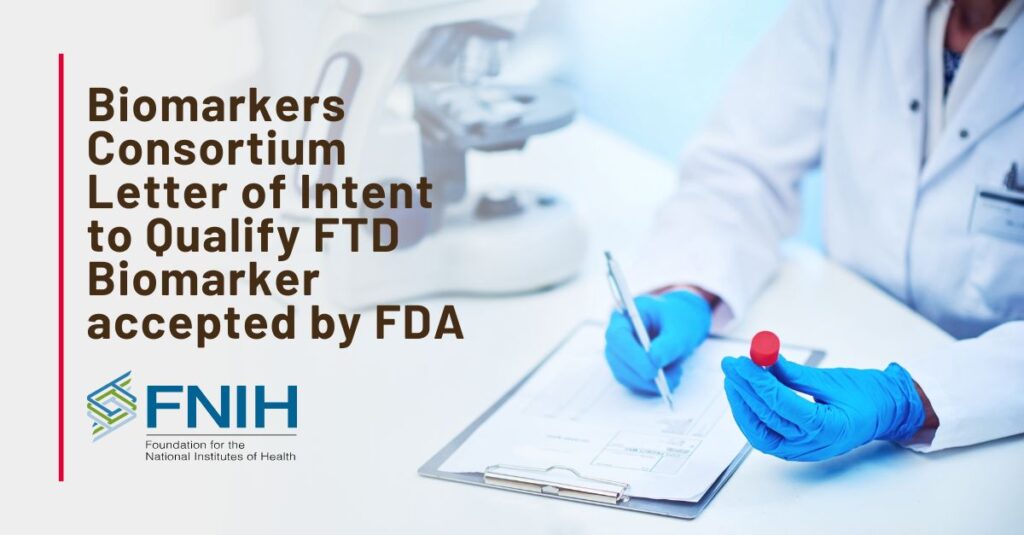Biomarkers Consortium Letter of Intent to Qualify FTD Biomarker accepted by FDA

The Foundation for the National Institutes of Health (FNIH) Biomarkers Consortium announced in May that the US Food and Drug Administration (FDA) has accepted its letter of intent to apply for the qualification of the protein neurofilament light (NfL) in blood as a biomarker for the early detection of approaching symptom onset in genetic FTD.
The letter of intent was submitted as part of an FNIH project, “Neurofilament as a Fluid Biomarker of Neurodegeneration in Familial FTD,” which was launched in 2022 to advance the validation and qualification of NfL as an FTD risk biomarker. Submitting a letter of intent to the FDA, which provides information on a biomarker and its intended use in drug development, is the first step towards qualifying that biomarker for a specific application, known as the context of use, in clinical trials.
When an axon, the part of a neuron that connects it to other cells, is damaged or begins to degrade, it sheds NfL proteins. According to research, higher levels of NfL in cerebrospinal fluid and blood are associated with neurodegeneration. The biomarker also shows considerable promise for tracking the progression of genetic FTD, with NfL levels rising in people with an FTD-causing genetic mutation before the onset of symptoms.
“The families affected by familial FTD are urgently asking for prevention trials so that potential treatments can be tested to see if they could delay or prevent disease onset,” AFTD senior director of scientific initiatives and FNIH Biomarkers Consortium Steering Committee chair Penny Dacks, PhD. “This biomarker qualification initiative is an important step to help identify people likely to convert to clinical disease and to encourage investment in such preventative clinical trial designs.”
As noted in an Alzforum article, the letter of intent submitted to the FDA highlights strong evidence supporting NfL as a biomarker, with the most substantial evidence coming from international organizations that have been tracking various biomarkers for over a decade. Scientists with the ALLFTD longitudinal study found that NfL rises in people carrying risk-creating mutations of the GRN or MAPT genes before symptoms begin. Researchers with the GENFI study reported presymptomatic elevated NfL levels in people with FTD risk genes.
With the letter of intent accepted, representatives of the FNIH will meet with the FDA to discuss what data the agency will need to qualify NfL as an indicator of approaching symptom onset. Researchers are currently studying different methods for analyzing NfL levels, with the top one or two tests being sent to the FDA for consideration.
Researchers worldwide are working to discover and qualify biomarkers for diagnosing and monitoring FTD and other dementias. A nationwide study in the United Kingdom is seeking to generate the evidence needed for blood biomarkers to be utilized by the National Health Service.
Longitudinal studies like ALLFTD and GENFI are just some ways to participate in research. Visit our Ways to Participate page to learn more about different opportunities to take part in FTD research.
By Category
Our Newsletters
Stay Informed
Sign up now and stay on top of the latest with our newsletter, event alerts, and more…
